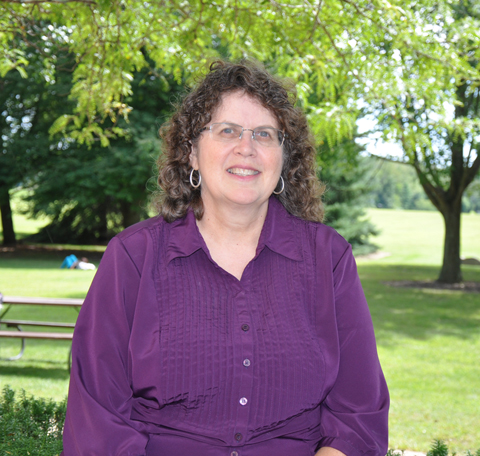Purdue Profiles: Karen Donah
October 7, 2014
 |
|
Karen Donah, continuing lecturer and coordinator of American Sign Language at Purdue North Central. (Purdue University photo/Karen Prescott) |
As a college student, Karen Donah learned American Sign Language (ASL) so she could better communicate with her sister, who is deaf.
The more Donah learned about the language and culture of deaf and hard-of-hearing people, though, the more she realized that she has a passion for teaching others about those topics. Now, as a continuing lecturer and coordinator of American Sign Language at Purdue North Central, Donah teaches ASL and helps bridge the gap between American Sign Language users and those who wish to communicate with and learn from them.
What are your duties as coordinator of American Sign Language at Purdue North Central?
I oversee our campus' ASL classes, which consist of four levels, or semesters, of ASL. Purdue North Central also offers a deaf culture class.
At Purdue North Central, students can take ASL classes to fulfill their major's language requirement. We also have a lot of students who take ASL simply because they want to learn the language, whether it's because they have a family member who is deaf or hard of hearing or because they want to pursue a career that involves ASL.
The majority of our students are hearing, but we also have some deaf and hard-of-hearing students, too. Some have recently become deaf and they want to learn ASL. Others didn't learn ASL when they were younger and want to do so now.
The students who take our classes are very diverse. Each semester, there are about 130 ASL students total. We also have two additional faculty members who teach ASL classes.
What are some of experiential learning opportunities offered to ASL students?
I'm the academic advisor for our campus' American Sign Language club, which involves many of our ASL students. The club holds 18-19 events each year. All of these events are aimed at bringing together our ASL students and people in the community who are deaf or hard of hearing. Others are people in the community who sign or are interested in ASL and deaf culture.
For example, the ASL club holds a coffeehouse event every month. This is a social event in which students and people from the community come together to talk about issues relevant to those who are deaf or hard of hearing. At each event, there is usually an activity or a presentation that involves a guest speaker who talks about their experiences in a specific role related to ASL and/or the deaf community. Strong support from our other ASL faculty members, Jason Maloney and Joanna Witulski, helps make these events possible and helps make our ASL program robust.
Through the club, I also help coordinate activities on and off campus in which ASL is used. For instance, we hold "silent" game nights on campus and a "silent" dinner at a restaurant in Michigan City every semester. We interpret all presentations from ASL to spoken English to be inclusive of everyone who attends.
All these events reinforce the sign language that students have learned in class and, because people from the community who are fluent in ASL attend, the events help introduce students to new signs. This immerses students in the language as well as the culture and helps them learn.
In what other ways do you introduce students to the culture of deaf and hard-of-hearing people?
I teach a deaf culture class that covers the history and culture of deaf and hard-of-hearing people in America. I also try to impress upon my students the importance of learning about this culture and of learning how to relate to and communicate with deaf and hard-of-hearing people.
My goal for the deaf culture class is for the students to come away with the same respect and appreciation for deaf and hard-of-hearing people and their culture that I have gained over the years. By learning ASL and meeting so many of these individuals over the years, my life has dramatically changed for the better. Many deaf people have brought a richness to America that we should all learn about.
I cherish ASL and deaf culture, and I feel privileged to have become accepted and to have the opportunity to teach ASL to those who wish to learn.
What are your future plans for ASL instruction at Purdue North Central?
I'd like to see a major in ASL-English interpreting established, and/or possibly a minor in deaf studies. It's something we need more of in Indiana.
Just a few Indiana universities offer an interpreting major, yet there are deaf people living throughout the state. If we end up offering that major, we could take a big step forward in helping to facilitate good communication with the deaf and hard-of-hearing community. That would be beneficial to everyone involved.
Writer: Amanda Hamon Kunz, 49-61325, ahamon@purdue.edu

